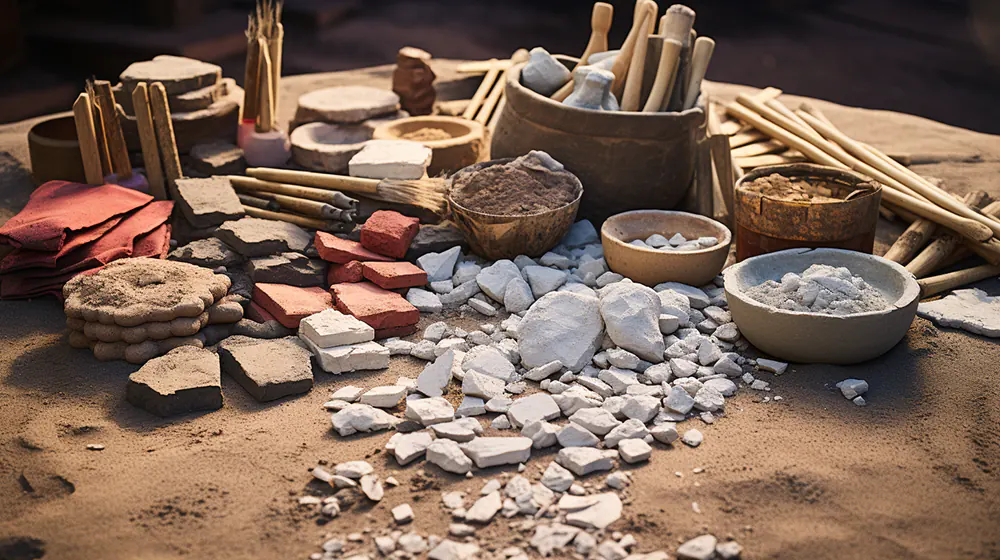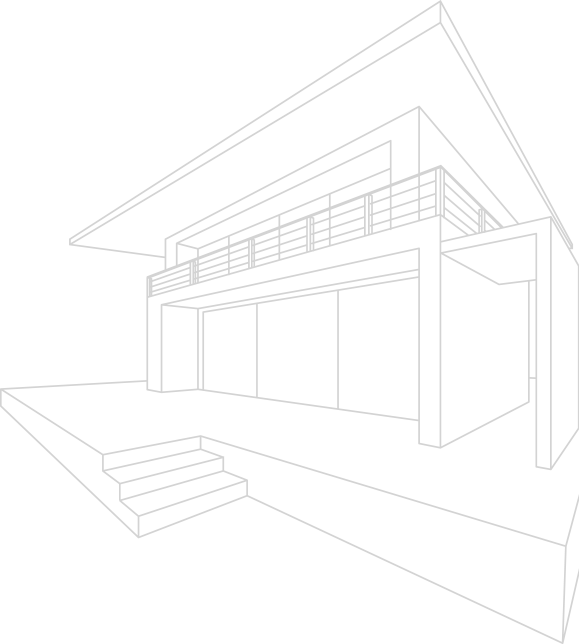Mud Floor: Should I Get This Over Tile?
Introduction
Mud flooring, an age-old practice with a modern twist, is making a comeback in residences and commercial establishments alike. Praised for its eco-friendliness, cost-effectiveness, and unique aesthetic appeal, mud flooring is a sustainable choice that marries beauty with function.
In this comprehensive blog post, we delve deep into the fascinating world of mud flooring. Join us as we explore its installation process, uncover its numerous benefits, and discover how it can truly be a game-changer in today's era of sustainable living. Get ready to be amazed!
So whether you're a homeowner aiming for a rustic appeal or an architect exploring sustainable options, join us as we unearth the potential of this humble, yet remarkable material.
What Is Mud Floor?
Wood substrates, such as mud floor, also known as cob flooring or clay floor, are flooring made by combining sand, clay, and straw. This natural surface for walking has been used by various cultures for centuries and is now regaining popularity due to its easy installation and eco-friendly characteristics.
Installation Process

The process of installing mud flooring is relatively simple and can be done by anyone with basic knowledge of construction. Here are the steps involved:
Preparation of the base - Before starting the installation, the base needs to be prepared by compacting and leveling it with a Portland cement-based mortar.
Mixing the ingredients - The next step involves mixing sand, clay, and straw in a ratio of 3:1:1 respectively. Water is then added to make a workable mixture with a Portland cement-based mortar.
Laying the wet set base layer - The first layer of mud is laid and compacted using hand tools or a tamper for maximum compaction, creating a solid base for the floor.
Adding decorative elements - This step is optional and involves adding elements like stone, shells, or colored glass to give the floor a warm unique look.
Laying the top layer - The final layer of mud is added on top and leveled using a trowel or other hand tools. Designs can also be etched onto this layer for a more personalized touch.
Drying and curing - The floor is left to dry and cure to a dry consistency for several days, depending on the climate and weather conditions.
Finishing touches - Once the floor is completely dry, a sealant or wax can be applied to protect it and enhance its appearance.
Materials and Tools Needed For a Mud Floor Installation

To ensure a successful earthen floor installation, it is important to have the right tools and materials at hand. Here are the essential items you will need:
Trowel: This is used for spreading and leveling the mud mixture evenly across the surface. It also comes in handy for smoothing out any bumps or irregularities on the surface.
Tamper: A tamper is used for compacting the mud mixture and creating a level surface, ensuring a solid and firm base for your floor
Mixing equipment: This includes a wheelbarrow or large container for mixing the mud ingredients and a shovel or hoe for the actual mixing process.
Water source: Easy access to a water source is essential as water is a key ingredient in the mud mixture.
Safety equipment: Always remember to wear protective gear, including gloves and safety glasses, to protect yourself from any potential harm during the installation process.
Sealant or wax: After the floor has dried and cured, a sealant or wax, along with other materials, is applied to protect it and enhance its appearance. Wax also gives the floor a smooth finish and makes it easier to clean.
Sand, Clay, and Straw: These are the primary materials needed to create the mud mixture for your floor. The typical ratio is 3:1:1 respectively. These materials are readily available, making mud flooring a cost-effective option.
Decorative elements: These are optional and can add a personalized touch to your mud floor. These can include stones, shells, colored glass, or even ceramic pieces.
Base material: This can range from gravel, crushed rock, or even an existing concrete floor. The base material is important for providing stability and drainage for your mud floor. It should be compacted and leveled before the mud mixture is applied.
Making sure you have all the right tools, local materials, and a well-defined plan beforehand will ensure a smooth and hassle-free installation process. Taking the time to prepare and organize can save you valuable time and effort in the long run.
Advantages of Mud Floor

Mud flooring has numerous benefits that make it an attractive option for both residential and commercial spaces. Some of these include:
- Eco-friendliness: Mud flooring is made from natural materials, making it an environmentally friendly option.
- Cost-effectiveness: The materials used for mud flooring are readily available and inexpensive, making it a budget-friendly choice.
- Durability: With proper maintenance, mud flooring can last for decades without showing signs of wear and tear.
- Aesthetic appeal: Mud flooring adds a unique and rustic charm to any space, making it a popular choice among homeowners and interior designers.
Disadvantages of Mud Floor

Despite its many benefits, mud flooring may not be suitable for everyone. Some potential drawbacks to consider include:
- Susceptibility to water damage: Since mud flooring is made of natural materials, it can be vulnerable to water damage if not sealed properly.
- Maintenance requirements: Mud flooring requires regular maintenance to prevent cracking and ensure its longevity.
- Limited design options: Unlike other flooring materials such as vinyl tile flooring or even heated tile flooring, mud flooring offers limited design options and may not be suitable for every interior style.
Design Ideas for Mud Floors

Mud flooring may have limited design options, but that doesn't mean it can't be used creatively to add character and charm to any space. Here are some ideas to get you started:
- Create intricate patterns using various colors of clay to achieve a unique and eye-catching aesthetic.
- Enhance the texture by incorporating stones or shells into the top layer.
- Utilize stencils to craft detailed and elaborate designs on the floor.
- Achieve a dynamic texture by mixing and matching different sizes of straw.
Mud flooring can also be incorporated in various ways to add a unique touch to your home.
- In the kitchen: Enhance the rustic and cozy feel of your kitchen with a mud floor that features a herringbone pattern, complemented by distressed wooden cabinets and a farmhouse-style sink.
- In the bathroom: Create a spa-like atmosphere in your bathroom with a mud floor in a soothing earthy tone, paired with a freestanding bathtub, pebble stone accents, a custom tile shower, and a rainfall showerhead.
- In the living room: Make a bold statement in your living room with a mud floor showcasing an intricate Moroccan tile design, accompanied by a plush area rug, floor cushions, and a cozy fireplace for a bohemian-inspired space.
Frequently Asked Questions (FAQs)

Is mud flooring suitable for high-traffic areas?
Yes, mud flooring is highly durable and can withstand heavy foot traffic when properly maintained. Additionally, it has a natural and earthy aesthetic that adds warmth and character to any space. Moreover, it is an eco-friendly option that promotes sustainability and connects us to the natural elements of the earth. With its unique texture and versatility, mud flooring offers a distinct and inviting atmosphere that is perfect for creating a cozy and rustic ambiance.
How often does mud flooring need to be sealed?
It is highly recommended to seal mud flooring every 1-2 years, depending on the level of foot traffic, exposure to moisture, overall maintenance requirements, and the specific conditions of the environment. Regular sealing not only helps preserve the integrity and longevity of the flooring but also provides additional protection against wear and tear. By maintaining a proper sealing routine, you can ensure optimal performance, durability, and aesthetic appeal of your mud flooring over time. Feel free to reach out to us at Floors & Tiles In Style for any needed help or advice with your mud flooring.
Should I use ceramic or quarry tiles for my mud floor?
It ultimately depends on personal preference and the specific needs of your space. Ceramic tiles offer a smooth and uniform surface that is easy to clean, while quarry tiles provide a more natural and rustic appearance with their irregular shapes and textures. Consider factors such as the desired aesthetic, maintenance requirements, and cost when deciding between ceramic or quarry tiles for your mud floor. Both options can be used successfully for mud flooring, especially when installed using thick-setting beds. So, it is a matter of choosing which best fits your design vision and budget.
Conclusion
Mud flooring is an ancient and versatile option that has stood the test of time because of its natural beauty. Its natural, eco-friendly materials and unique texture add warmth and character to any space, making it a popular choice among homeowners and interior designers.
While it may have some drawbacks, proper maintenance can help mitigate potential issues and ensure its durability for decades to come. With creative design ideas and careful consideration, mud flooring can add a distinct and charming touch to your home.
So, if you're looking for an affordable and sustainable flooring option with a rustic appeal, consider giving mud flooring a try! Here at Floor Tile , we would love to help with the whole process. Why wait? Start exploring the possibilities check out our blogs and unleash your creativity with mud flooring today!





